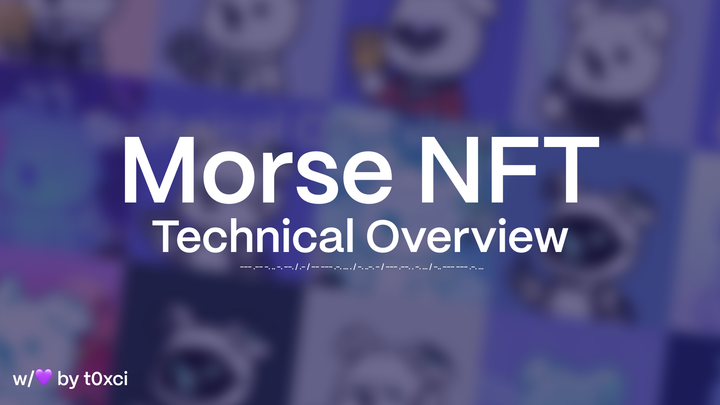Self‑Repaying Loans in DeFi: The Next Frontier

Introduction
Imagine taking out a loan that gradually pays itself back—without you lifting a finger—using protocol fees or yields generated in the background. That’s the promise of self‑repaying loans in decentralized finance (DeFi). By weaving revenue‑generating mechanics directly into loan contracts, these new models aim to relieve borrowers of constant upkeep, reduce liquidation risk, and broaden crypto lending’s appeal.
In this article, we’ll:
- Unpack the mechanics behind self‑repaying loan protocols (like Superseed) versus traditional DeFi lending.
- Examine new risk and security considerations these auto‑repayment features introduce.
- Explore economic implications for both retail users and institutional borrowers.
Whether you’re a DeFi newcomer curious about next‑gen loans or a seasoned trader weighing new credit tools, you’ll come away with a clear, human‑friendly overview of this emerging frontier.
1. Mechanics & Innovations
| Feature | Traditional Lending | Self‑Repaying Loans |
|---|---|---|
| Interest Model | Fixed/APY charged over time | Protocol revenue directs to debt |
| Repayment Effort | Manual repayment schedule | Automated, continuous reductions |
| Collateral Management | User monitors LTV & tops up | System maintains LTV via yields |
| Liquidation Risk | High if LTV breaches | Lower, as debt shrinks over time |
Traditional DeFi Lending
- How it works: You supply collateral (e.g., ETH), borrow an asset (e.g., USDC), and pay interest that accrues on your debt.
- Borrower’s job: Watch your loan‑to‑value (LTV), add collateral or repay principal if markets move against you.
- Pain points: Sudden liquidations, manual upkeep, complex fee schedules.
Self‑Repaying Innovations
Protocols like Superseed are pioneering a different playbook:
- Revenue Streams Inline
- A slice of protocol fees (trading, swap, vault yields) routes directly to repay borrower principal or interest.
- Yields from reinvested collateral earn returns that auto‑offset debt.
- Auto‑Adjusting LTV
- As protocol revenue chips away at your outstanding balance, your LTV improves—even if collateral value dips moderately.
- User Experience
- Borrowers deposit collateral, draw down their loan, then watch a live dashboard showing debt ticking down.
- No more manual debt payments or panic‑fueled top‑ups.
- Composable Strategies
- Some protocols let you choose which revenue stream to apply—trading fees, vault yields, or even governance token rewards.
These innovations shift the borrower’s role from “financial mechanic” to “strategic investor,” letting smart contracts handle the grunt work of debt management.
2. Risk & Security
Automating debt repayment sounds great—but it opens new attack surfaces and failure modes:
A. Smart‑Contract Complexity
- More moving parts: Auto‑repayment engines link lending contracts to yield‑generating vaults and revenue oracles. Each connection is a potential vulnerability.
- Upgradability risks: Patching bugs or upgrading logic can inadvertently disable repayment flows, leaving borrowers exposed to rapid LTV changes.
B. Oracle & Revenue Manipulation
- Oracle dependency: Protocol revenue rates (e.g., swap fees per block) often feed through price oracles. If an oracle is manipulated, repayment calculations could break—or even reverse.
- Flash‑loan attacks: Adversaries might skew short‑term fee measurements, tricking the system into misallocating repayments or pausing auto‑repay functions.
C. Revenue Shortfalls
- Market downturns: When trading and usage fall, fee revenue drops. If yields don’t cover interest, debts could grow again or liquidation protections fail.
- Reinvestment risks: Collateral reinvestment strategies (e.g., staking derivatives) carry their own slashing or depeg risks, undermining auto‑repay capacity.
D. Governance & Social Risks
- Protocol control: Governance may adjust repayment parameters—raising the share of fees that go to protocol treasury instead of borrowers.
- User complacency: Borrowers might over‑leverage, trusting auto‑repay without monitoring broader market health or contract updates.
Key takeaway: Protocol teams must maintain airtight audit processes, robust oracle designs, and clear governance safeguards to keep self‑repaying loans both reliable and secure.
3. Economic Impacts
Will these “set‑and‑forget” loans draw more users into crypto‑collateralized debt? Here’s what to watch:
1. Retail Adoption
- Lower barrier to entry: Casual DeFi users often fear liquidations and manual complications. Self‑repaying loans reduce that friction, making borrowing feel as easy as opening a savings account.
- Improved credit confidence: Seeing your debt decline automatically may encourage users to borrow more responsibly—and potentially borrow more often.
2. Institutional Interest
- Predictable debt service: Automatic repayments backed by protocol yields offer clearer cash‑flow models—appealing to treasuries and funds wary of volatile collateral values.
- Customizable strategies: Institutions can select conservative yield sources for auto‑repay while parking large collateral positions, optimizing their risk-return profile.
3. Protocol Growth & Liquidity
- Sticky users: Borrowers who enjoy auto‑repay features are more likely to stay engaged, renewing loans or exploring other products.
- Revenue alignment: As more revenue goes to repaying loans rather than protocol coffers, token‑price incentives must adjust—tying protocol sustainability to user benefits.
4. Market Competition
- Once self‑repaying models prove sustainable, traditional lenders may need to offer similar “plug‑and‑play” debt features—or risk losing market share.
Overall, self‑repaying loans promise to expand DeFi’s user base, unlock larger institutional pools, and spur healthy competition—provided the underlying mechanics hold up under stress.
Conclusion & Takeaways
Self‑repaying loans in DeFi represent a meaningful step toward automation, user friendliness, and risk reduction. However, they also introduce complex smart‑contract integrations, oracle dependencies, and governance trade‑offs.
| Dimension | Opportunity | Caution Point |
|---|---|---|
| User Experience | Simplified borrowing, lower upkeep burden | Risk of over‑leverage if users relax too much |
| Security | Fewer manual errors, LTV stabilization | New attack surfaces in revenue streams & oracles |
| Economic Growth | Broader retail + institutional adoption | Protocol sustainability tied to auto‑repay incentives |
| Competitive Pressure | Sets new industry standard for loans | Traditional platforms must evolve or lose relevance |
As DeFi continues to innovate, self‑repaying loans could become a mainstream offering—letting borrowers focus on strategy, not spreadsheets. The projects that nail robust mechanics and airtight security will lead this charge, unlocking the next wave of crypto borrowing for both everyday users and serious financial players.
Explore More on Mitosis University
- Collateralized Lending in our Blockchain Foundations section.
- Smart‑Contract Security glossary entry for deep dives on audit best practices.
- DeFi Innovation Case Studies under Market Insights for more protocol breakthroughs.
Internal Mitosis Links & Glossary References
- Bitcoin
- Blockchain
- Cryptocurrency
- Mitosis Core: https://university.mitosis.org/mitosis-core
- Governance: https://university.mitosis.org/governance
- Glossary: https://university.mitosis.org/glossary/
- Ecosystem Connections: https://university.mitosis.org/ecosystem-connections



Comments ()